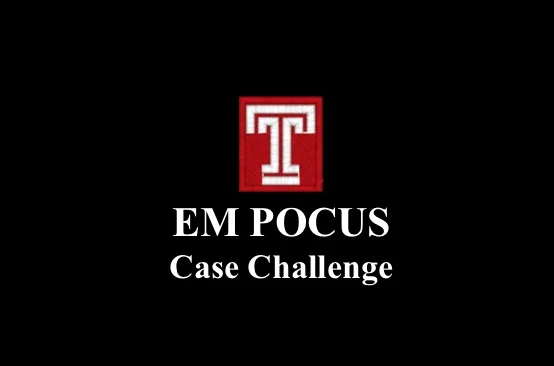Case:
62 yo male with PMH of HTN presented with atraumatic L arm swelling x 3 days. He denied any history of DVT, malignancy, or venous catheters. On exam, his L arm was notably swollen up to the mid-bicep area. Distal pulses were intact. A EMBU DVT study was performed:
Case conclusion:
Based on the EMBU findings of a subclavian DVT, the patient was started on a heparin drip and admitted. A CT chest did not show any signs of malignancy, and the etiology of the DVT was not discovered during the admission. He was discharged on anticoagulation and a plan to undergo an outpatient malignancy workup.
EMBU for Upper Extremity DVT:
There is currently no validated protocol for bedside ultrasound in the diagnosis of upper extremity DVT (like the 2-point compression study we use for lower extremities). The current recommendation is that you perform a point-by-point compression ultrasound study starting with the brachial vein just above the antecubital fossa. Position the patient with the arm externally rotated and abducted. Using the vascular probe, sequentially visualize and compress the vein without interruption as you slide along the brachial vein towards the axilla. Compress the axillary vein, then move the probe in a cephalad direction to visualize the subclavian vein via the infraclavicular approach. End with compressing the internal jugular vein.
When the subclavian vein traverses below the clavicle it is non-compressible, therefore you can not apply direct pressure on it to demonstrate patency. Sometimes you may directly visualize an echogenic clot in the vein (obvious in the case above). An additional method to evaluate patency of the vessel is utilizing doppler flow to determine if there is normal respirophasic variation in the venous flow. This technique is very similar to evaluating carotid flow time. Visualize the subclavian vein in the longitudinal view and obtain a pulsed-wave Doppler tracing. Normally, variation is seen in venous flow as intra-thoracic pressure changes with inspiration and expiration. With normal venous flow, the tracing will have repeated troughs (inspiration) and peaks (expiration). If these variations are absent, it indicates a proximal obstruction (see below for an example). You can also use this tool in lower extremity DVT studies - obtain a CFV tracing if you are concerned about a proximal clot or compression.
As with most EMBU studies that have not yet been validated, a positive finding in an upper extremity study is specific for a DVT. However, a negative EMBU does not definitively rule out a clot (especially in the SC vein).
Pearls: Upper extremity DVTs account for about 5-8% of all DVT cases. Most are associated with malignancy, venous catheters, or pacemaker wires. It is very unusual to have a spontaneous UE DVT in the absence of an indwelling venous catheter but should still be on your differential in a case of unilateral upper extremity swelling.
- Jessica Patterson, MD, Emergency Medicine Ultrasound Fellow
References:
1. Ma, O. J., Mateer, J. R., & Blaivas, M. (2008). Emergency ultrasound. New York: McGraw-Hill Medical.
2. Extremity Swelling - Upper Extremity DVT. (2013). Retrieved February 17, 2018, from https://www.med-ed.virginia.edu/courses/rad/edus/es2.html

